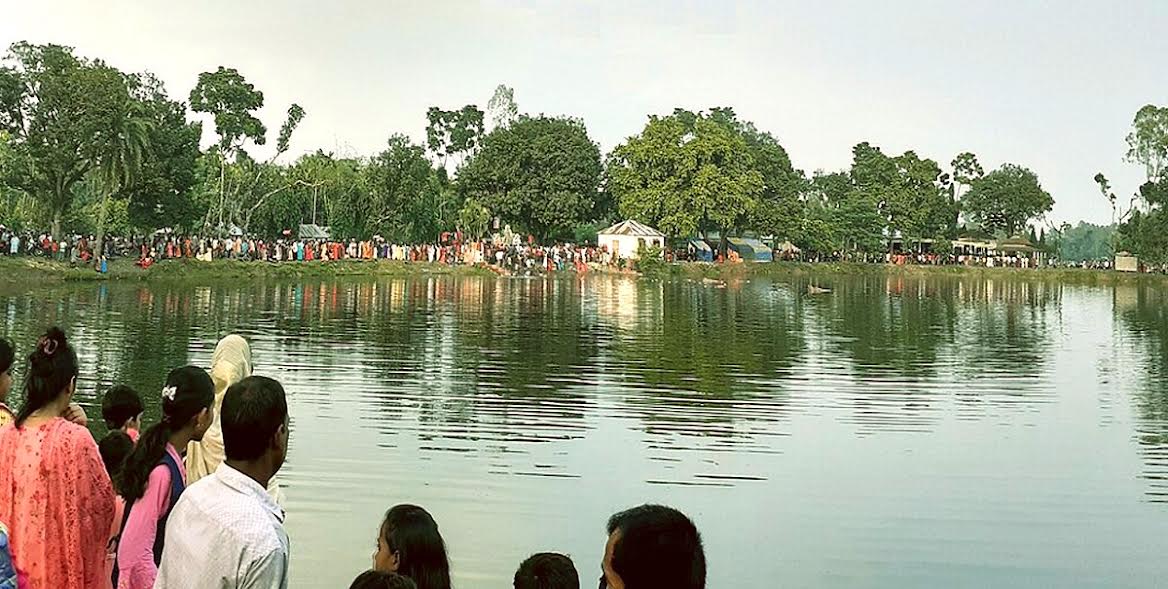News Flash
News Flash

By Md Mamun Islam
RANGPUR, Oct 24, 2025 (BSS) – The curiosity to know more accurate information about the myths, legends and folktales surrounding an ancient historical Dighee (pond) known as 'Sindurmati' has been boundless among the people for centuries.
The Hindus believe that bathing in the Dighee, located in Sindurmati Mouza on the border of Kurigram and Lalmonirhat districts, brings peace and wipes away all the sins committed in their lifetime.
All these legends and myths are still alive in the minds of the people of the area, country and neighbouring India for centuries.
During the renovation of this legendary Dighee in 1975 by government initiative, many ancient coins and statues were found, which are currently preserved in the Bangladesh National Museum.
Talking to BSS, senior Hindu figures from the Sindurmati area Nibaran Chandra Barman, Ambika Charan Roy, Shree Subhash Chandra, Birendra Nath Roy, Bibhuti Bhushan, Narayan Chandra and Narendra Nath, narrated the myths, hearsays and legends surrounding the Dighee.
They suggested research to get a proper idea and more accurate information about this historical and religious site.
Legend has it that about 4,000 years ago, a Brahmin Zamindar (King), who came from Sri Lanka, dug this Dighee as per instructions received from God to have a son and to provide pure drinking water for the subjects of his kingdom.
The Dighee was dug deeper but no water came out from its bottom.
Then in another dream, the Zamindar was asked to worship at the bottom of the Dighee along with his two minor daughters Sindur and Mati for water.
As per the divine instructions, the Zamindar took his two daughters to the bottom of the water body.
He also took there a black goat and a white goat, a black and a white chest and many other materials required for worship as per the divine instructions.
The Zamindar continued to worship for several days but the water did not flow.
At one point, the Zamindar remembered that he had forgotten to take some more materials to worship properly. Then he returned to his palace to bring those forgotten materials and inputs.
After some time, he returned and found that the Dighee was full to the brim with sweet drinking water but his daughters had drowned.
It was the holy day of 'Mohaassthami'. Since then, the Dighee and the village are known as Sindurmati and the water body is filled to the brim in all seasons.
The Zamindar and his wife Meneka Devi were deeply saddened and quite unhappy by the death of their beloved daughters.
One night in a dream, the Zamindar was told by God to be patient. His God wanted to fulfill his great deeds.
A year later, on the same day of 'Mohaassthami', the Zamindar saw two fingers of his daughters floating in the Dighee water.
He was able to talk to his beloved daughters and came to know that they were growing well under the care of God.
The daughters also informed the Zamindar that they would soon have a brother.
His wife Meneka Devi soon became pregnant and gave birth to a son. The next night, through another dream, the Zamindar named his son 'Brahmadeva' as per the instructions of God.
Both the Zamindar and his wife pleased their subjects in this moment of joy.
A year later, the Zamindar had another dream that he would take his son to the river Brahmaputra, which was unnamed then and located at Chilmari, about 40 km southeast of Sindurmati village.
Accordingly, he went to the river with his son.
On the same day of Mohaassthami, Brahmadeva drowned in the river while bathing there. Again shocked, the pious Zamindar continued to worship.
God again told him in another dream that the river would be named Brahmaputra after his son Brahmadeva and that this place would remain a holy place for mankind till the end of the universe.
The Zamindar was also informed that every year on the day of Mohaassthami, thousands of people will come to bathe there to wash away their sins and become pure every year.
After bathing at the Brahmaputra on Mohaassthami, people will bathe in the Dighee on Mahanavami.
Therefore, Hindus across the subcontinent celebrate the religious festival of 'Astami Snan' at the Brahmaputra and 'Navomir Snan' at the Sindurmati Dighee the next day.
On this occasion, the Sindurmati Fair is organized there on the ninth ‘Tithi’ (day) of Chaitra month and other pujas are held in this site every year for around 300 years.
The area becomes resplendent with the arrival of a significant number of Hindu pilgrims from different parts of Bangladesh. Many devotees from the neighboring India also attend this fair.
People believe that there is a secret underground tunnel between the two holy places of the Brahmaputra and the Dighee which keeps the pond always full to the brim even during the dry season when all the water bodies around it dry up.